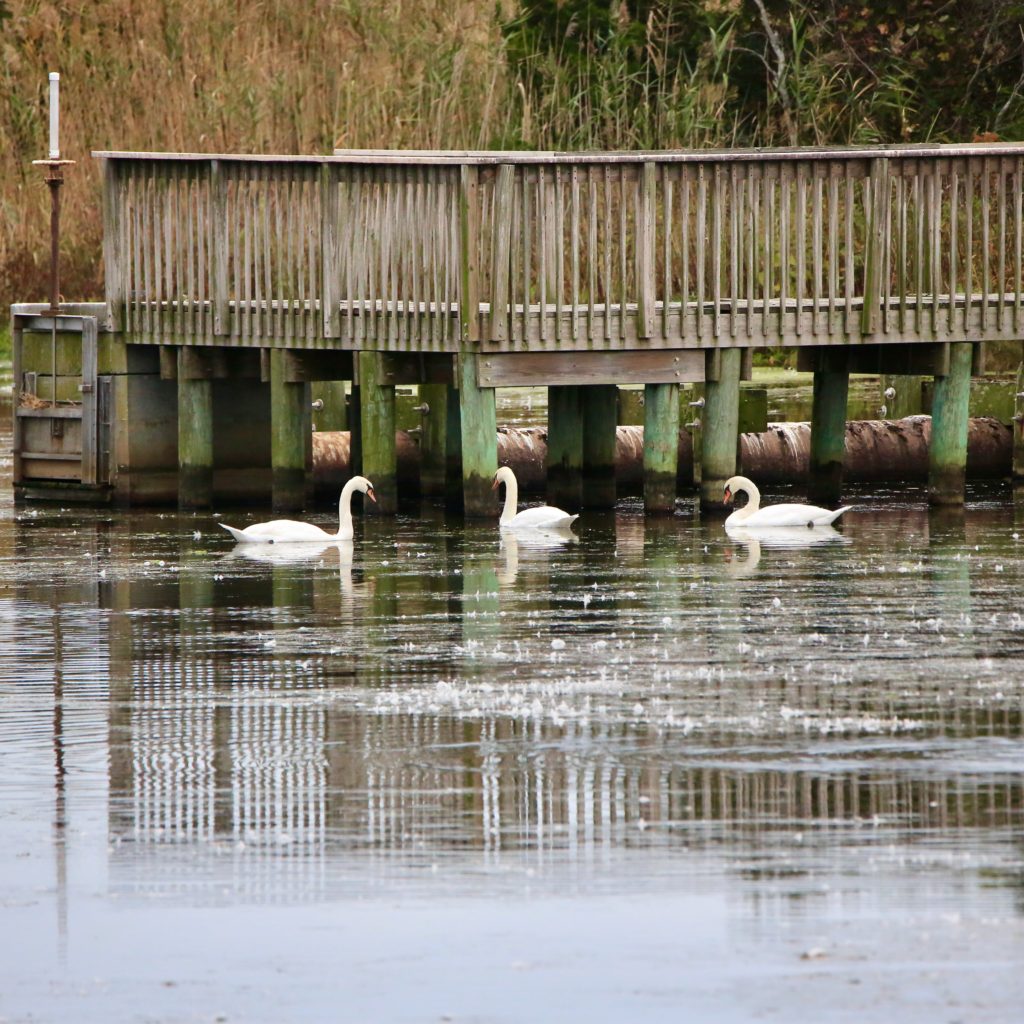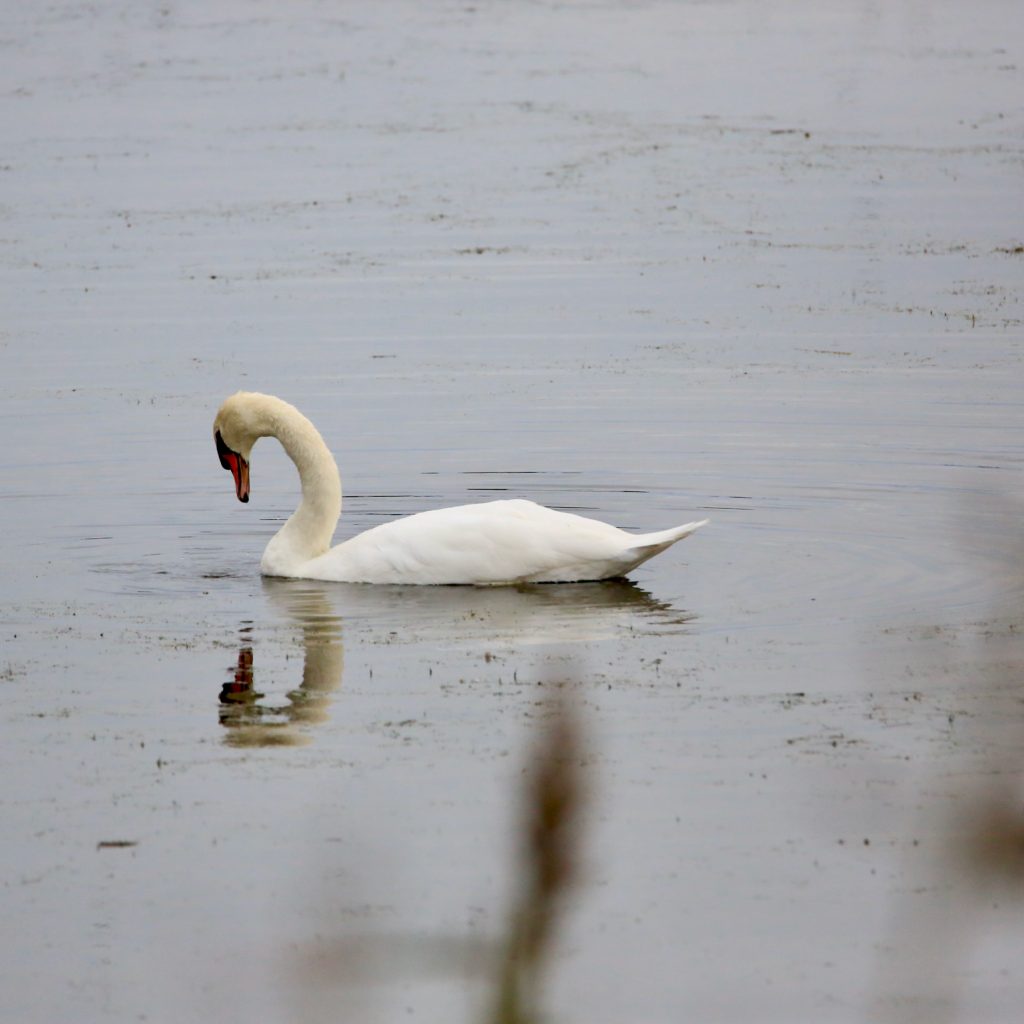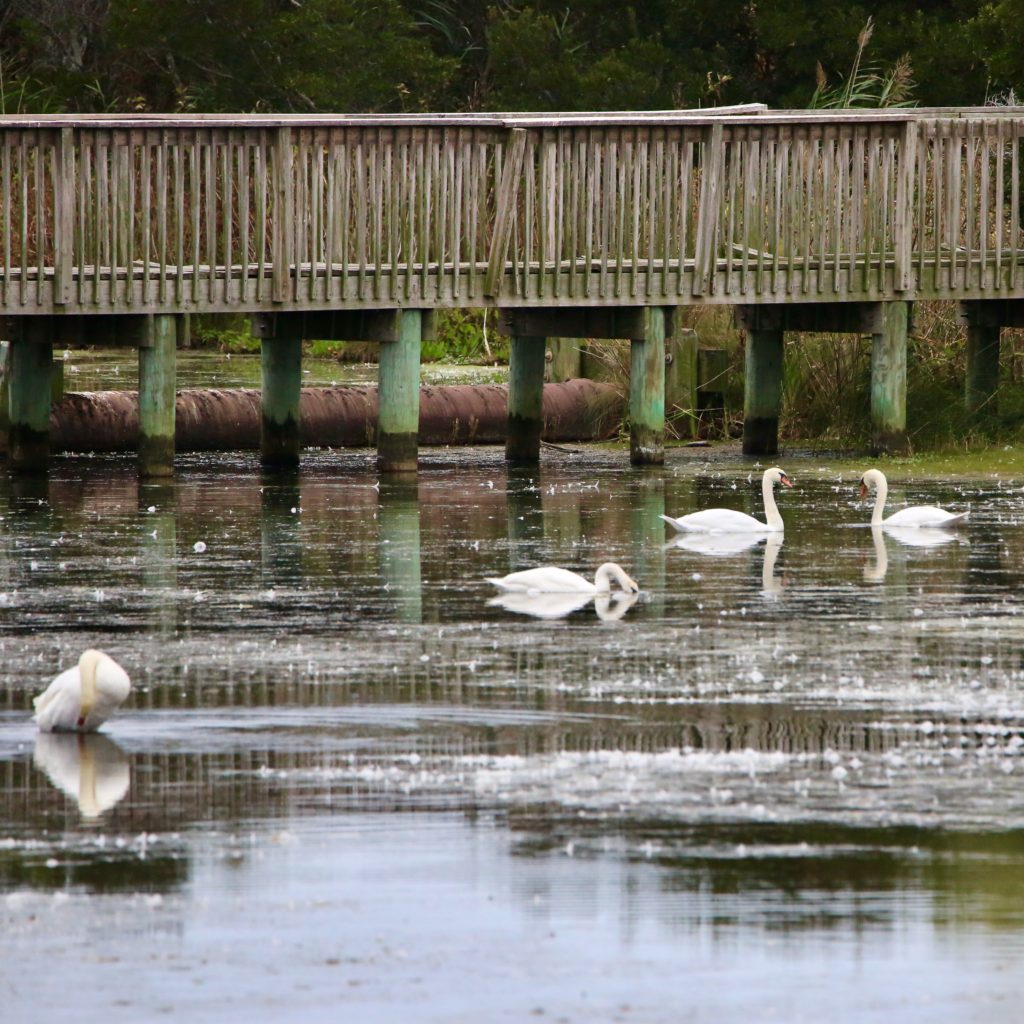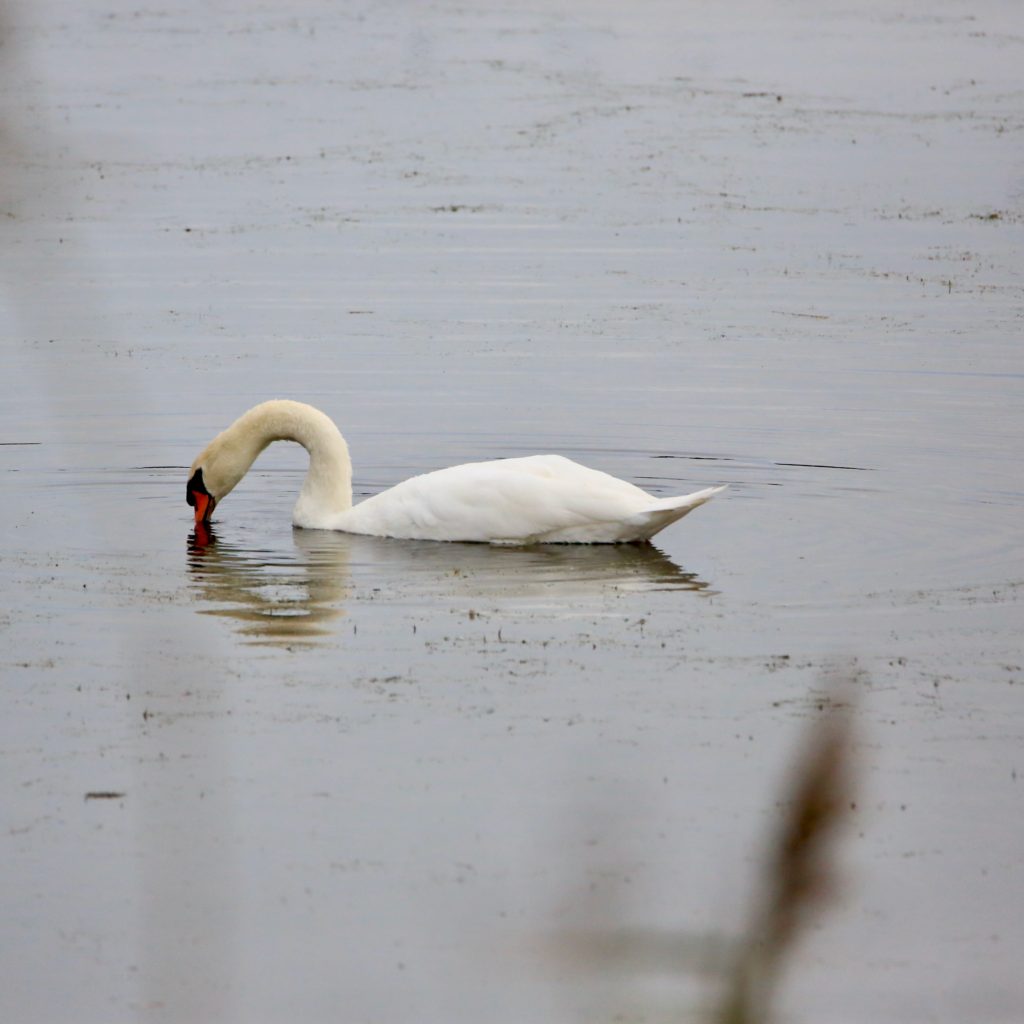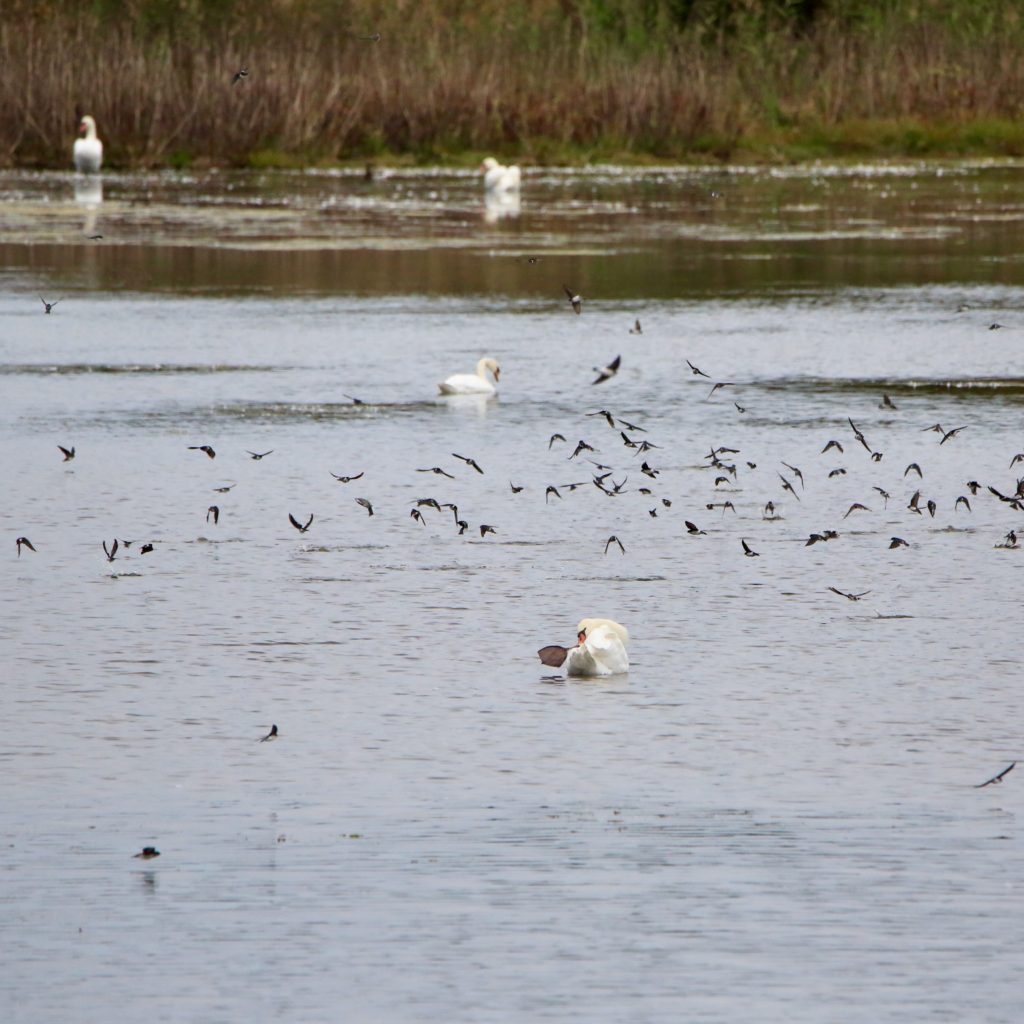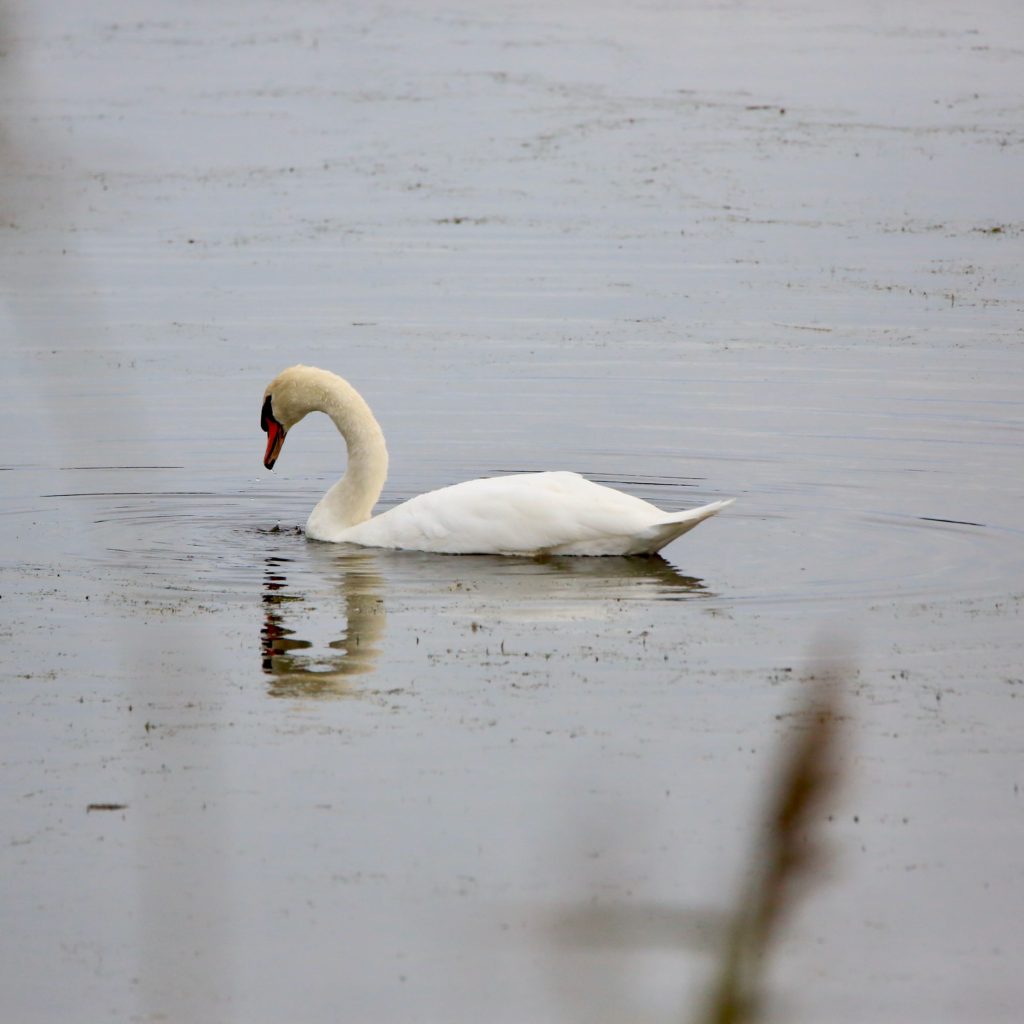
The Mute Swan
A Mute Swan is a fun bird to see while bird watching. Below are some tips to help you identify Mute Swans. We have also put together a list of fun Mute Swan t-shirts, Mute Swan bird patches, birdhouses, bird feeders, binoculars, stickers, and other fun bird-watching items.
About Mute Swans
The Mute Swan is native to Britain but can be found in parts of Northern America. It is one of the largest and heaviest flying birds in the world. It has huge wings which make loud noises as the bird flies. It also makes a range of loud vocalizations that is contrary to its name.
Description and Identification
Adult Mute Swans are 55-63 inches long, with a 79-94 inch wingspan. Males can easily be distinguished through their generally larger size and the presence of a larger knob on their bill. These birds have beautiful white plumages, long necks, reddish-orange bills, and black faces. Adult Mute Swans have a black knob on their bills. Immature swans have dusky brown bodies and gray bills. These birds aren’t actually “mute”, they are named as such because of them being a lot less vocal than other swans.
Mute Swan Size
Wingspan: 78.74 inches
Weight: 13-16 kilograms
The adult of the species grows to a maximum length of averagely 80-90 inches.
Mute Swan Appearance
The mute swan is a completely white bird. It is distinguishable because of its long elegant neck. The bird has an orange bill that has a black knob at its base. The male mute swan is known as a cob while a female is a pen. These two have similar looks. The only distinguishing feature is that the cobs are slightly larger and have a more prominent knob on the bill. Their offspring have a grayish-brown neck with a gray bill. These juveniles lack the knob seen in adults.
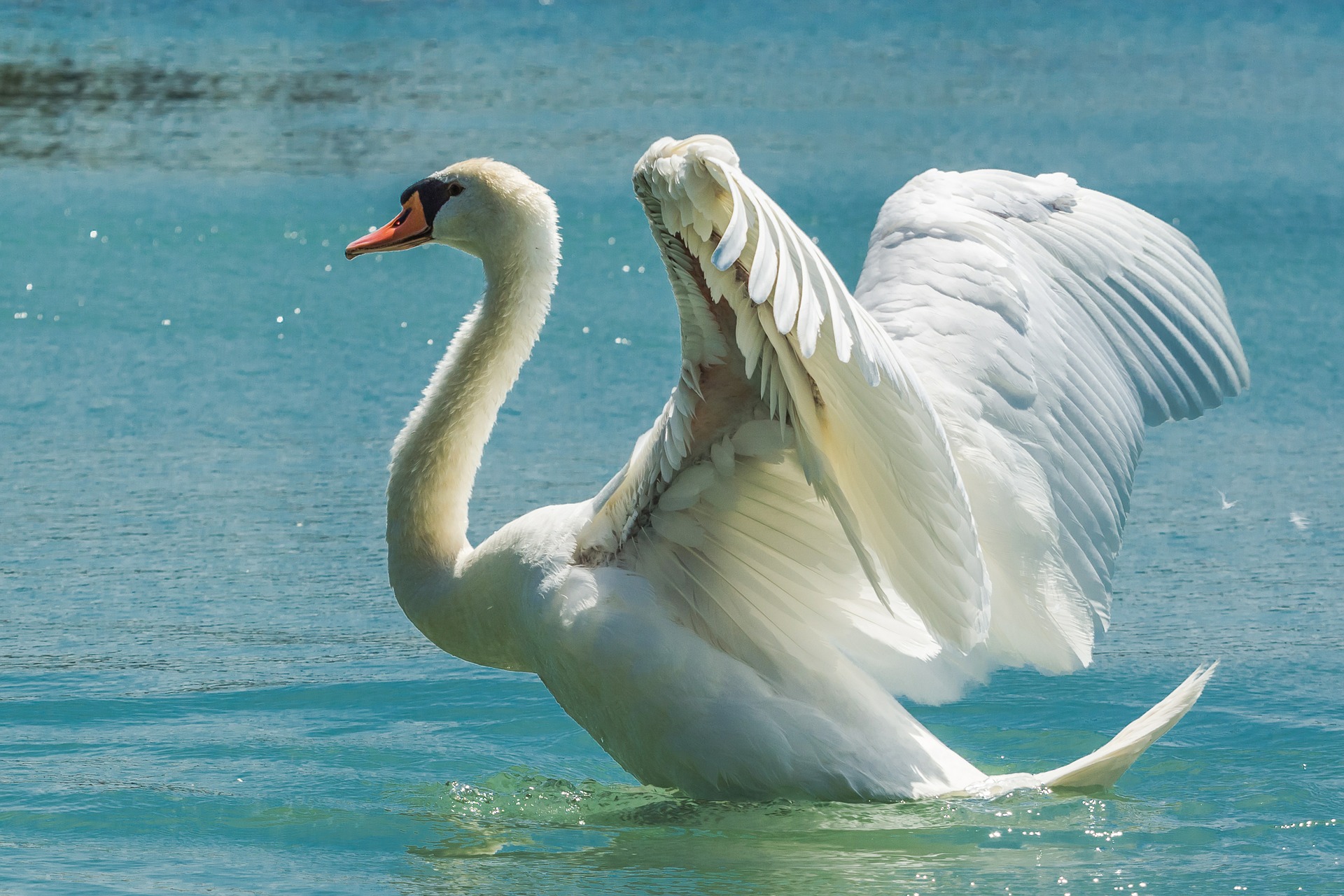
Mute Swan Food
Mute Swans have insatiable appetites. Their diet mainly consists of plant material, but sometimes it
can also consist of insects, snails, worms, fish, and tadpoles. They can eat up to 8 pounds of
submerged aquatic vegetation in a day, causing great harm to the ecosystem of that particular
area. Their feeding habits are highly invasive to the habitats of native waterfowl, and sometimes
they can overgraze to such an extent that they destroy particular vegetation from the ecosystem.
These birds often feed in flocks in winter, and aside from the damage they cause from their
massive food consumption, they can also damage crops by trampling with their large feet.
The mute swan mainly feeds on submerged aquatic vegetation. It is not uncommon to find this species of birds feeding on cereal crops and bread crumbs availed by humans.
Mute Swan Habitat
Mute Swans can be found in a wide variety of aquatic habitats such as fresh and saltwater
marshes, ponds, lagoons, and well-sheltered lakes. They are often located in regions with close
proximity to humans. During summers they prefer to live in areas with shallow water. Mute Swans
are very resilient as they are not only known to adapt to degraded habitats, they generally thrive in
them.
This particular bird species reside in a wide range of water bodies. These bodies may include ponds, tidal estuaries, lakes, and sheltered bays.
Range and Migration

Mute Swans are highly invasive birds that are native to northern Europe and Asia. These birds
have become widespread in North America after being brought in from Europe in the early 1900s
to decorate lakes and ponds. These birds migrate only when it is necessary. When breeding lakes
in the North begin to freeze, they travel southwards or towards coastal water. Mute Swans located
in the South might be sedentary.
Mute Swan Life and Behavior
The mute swan is a rather territorial bird. Disputes over territory may result in aggressive fights between mute swan males. In their natural habitat, these birds are solitary creatures although domesticated swans adopt a colony mindset. The birds set up a cone-shaped nest at the edge of the water body. The birds then lay pale blue eggs which are incubated by the female. This incubation period lasts for five to six weeks before they hatch. The hatchlings then leave the nest under the supervision of the parents. The family usually sticks together until the next breeding season.
Mute Swan Nesting
Mute Swans are inherently monogamous in nature, but it is not uncommon for these birds to re-
mate in case their partner dies. As these birds are highly territorial, they prefer not to nest in
colonies. After the selection of nest sites, breeding begins in late March or early April. The nests
are built above the water level in swampy areas. Females have the primary responsibility of
building the nest, while the males assist them in gathering material. Mute Swans are extremely
protective of their nests hence it’s recommended to be at a safe distance from their nesting sites. If
a predator enters their nesting site, they begin their defensive attack by loudly hissing, and if this
does not work, they follow up with a physical attack. The incubation period is 36-38 days, in which
the females spend majority of the time sitting on the eggs while the males stand guard.
Ornithology
Bird Watching Academy & Camp Subscription Boxes
At Bird Watching Academy & Camp we help kids, youth, and adults get excited and involved in bird watching. We have several monthly subscription boxes that you can subscribe to. Our monthly subscription boxes help kids, youth, and adults learn about birds, bird watching, and bird conservation.
- Kids Bird Watching Monthly Subscription$10.00 / month
- Kid & Adult Bird Watching Starter Pack Subscription$10.00 / month and a $72.00 sign-up fee
- Kids Bird Watching Starter Pack Subscription$10.00 / month and a $19.00 sign-up fee
Bird Watching Binoculars for Identifying Mute Swans
The most common types of bird watching binoculars for viewing Mute Swans are 8×21 binoculars and 10×42 binoculars. Bird Watching Academy & Camp sells really nice 8×21 binoculars and 10×42 binoculars. You can view and purchase them here.
- Birding Binoculars$49.99
- Kids Binoculars$13.99
Mute Swan T-shirts
If you love the Mute Swan you should purchase a Bird Watching Academy & Camp T-shirt. To help support bird conservation we donate 10 percent to bird conservation activities.
Mute Swan Iron On Patches
Kids, Youth, and Adults love to collect our Bird Watching Academy & Camp iron-on patches. Our bird-watching patches help you keep track of the birds you have seen and identified. You can also display the patches on our Bird Watching Academy & Camp banners.
The Mute Swan is a great iron-on patch to start your collection with. The patches are durable and can be sewn on or ironed on to just about anything.
Mute Swan Stickers
Stickers are a great way for you to display your love for bird watching and the Mute Swan. We sell a monthly subscription sticker pack. The sticker packs have 12 bird stickers. These sticker packs will help your kids learn new birds every month.
Bird Feeders For Mute Swan
There are many types of bird feeders. Here are our favorite bird feeders for your backyard. We use all of these bird feeders currently. Kids will have a great time watching birds eat at these bird feeders. Using this collection of bird feeders will provide a wide variety and many types of birds.
Best Bird Houses for Mute Swan
There are many types of birdhouses. Building a birdhouse is always fun but can be frustrating. These 4 birdhouses have become our favorites. Getting a birdhouse for kids to watch birds grow is always fun. We spent a little extra money on these birdhouses but they have been worth the higher price and look great.


